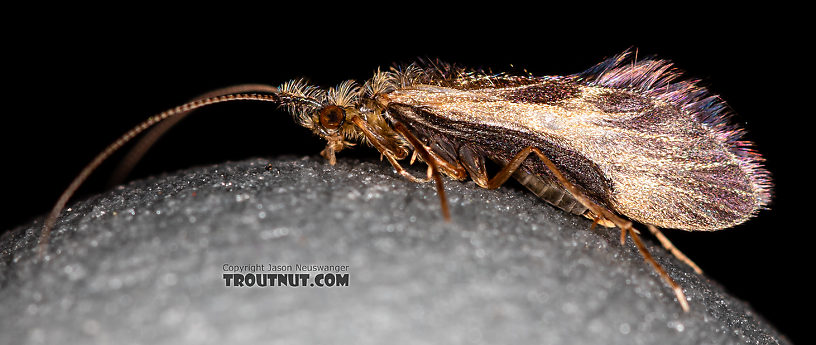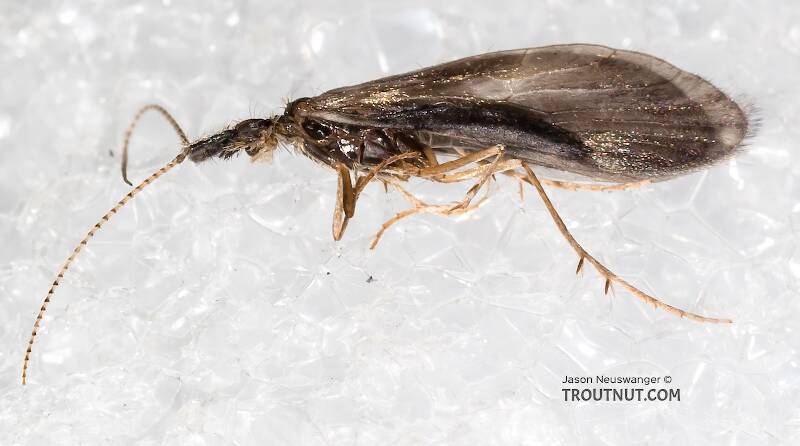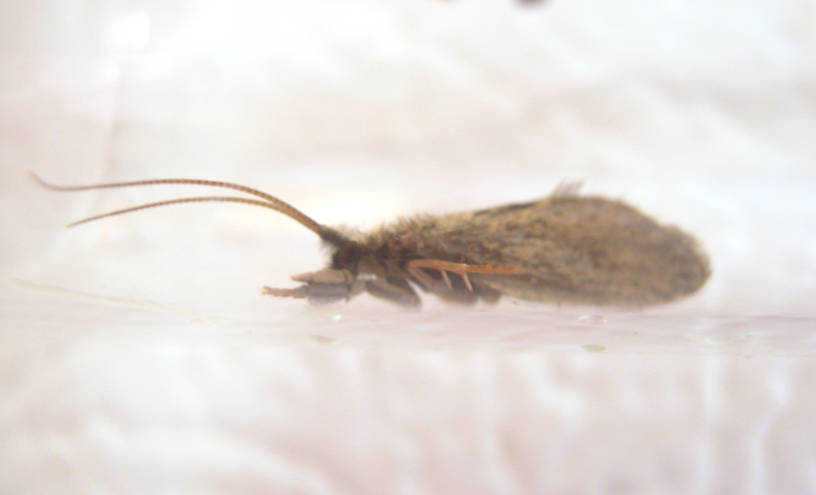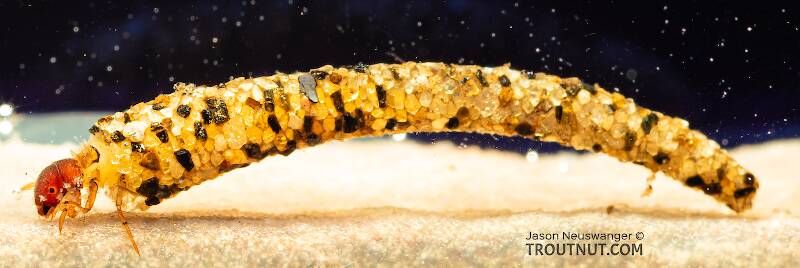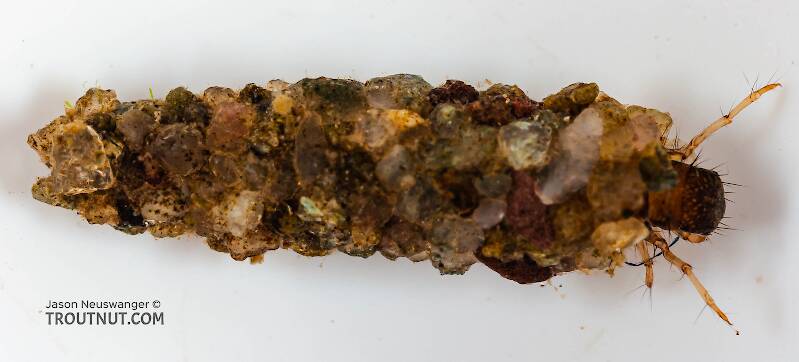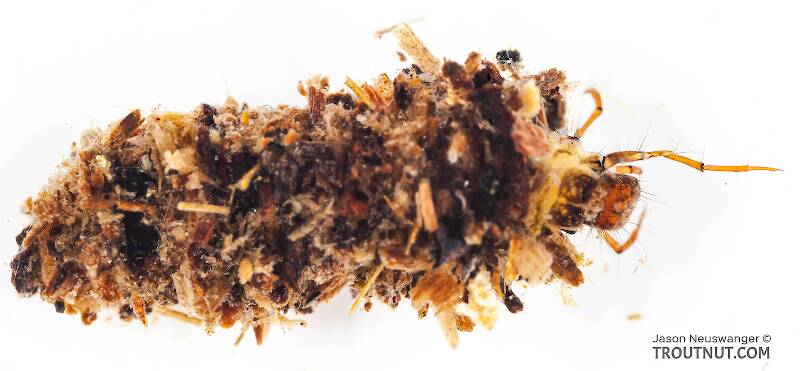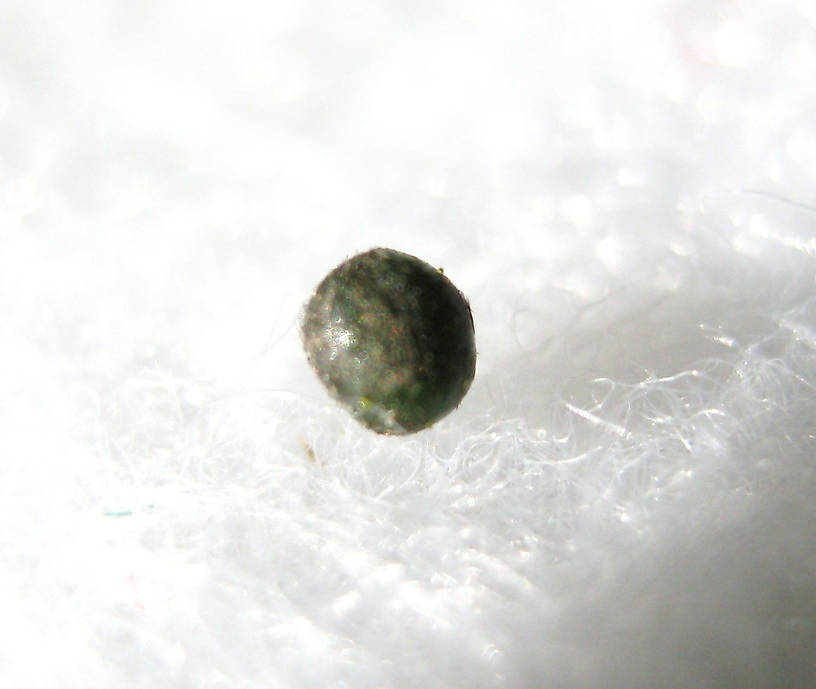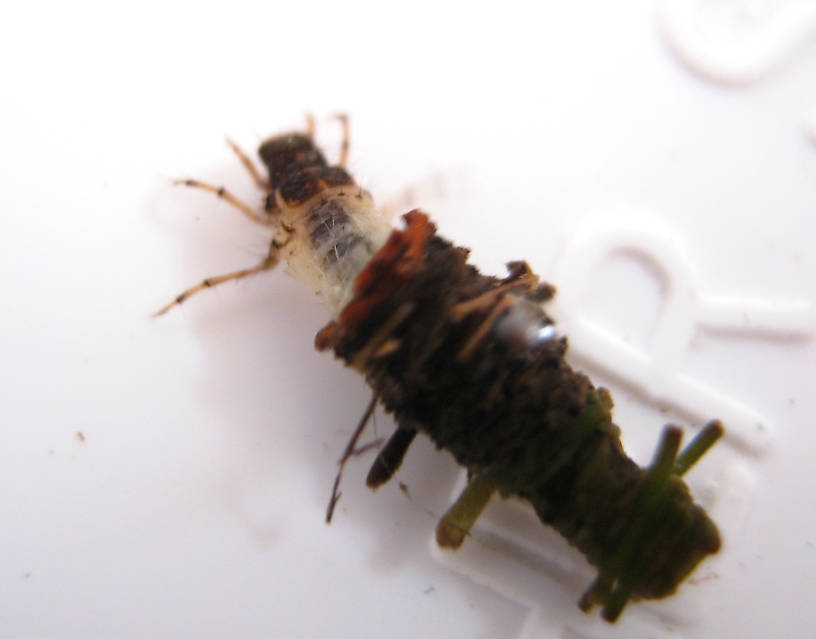
Salmonflies
Pteronarcys californica
The giant Salmonflies of the Western mountains are legendary for their proclivity to elicit consistent dry-fly action and ferocious strikes.
Featured on the forum

Nymphs of this species were fairly common in late-winter kick net samples from the upper Yakima River. Although I could not find a key to species of Zapada nymphs, a revision of the Nemouridae family by Baumann (1975) includes the following helpful sentence: "2 cervical gills on each side of midline, 1 arising inside and 1 outside of lateral cervical sclerites, usually single and elongate, sometimes constricted but with 3 or 4 branches arising beyond gill base in Zapada cinctipes." This specimen clearly has the branches and is within the range of that species.

Troutnut is a project started in 2003 by salmonid ecologist Jason "Troutnut" Neuswanger to help anglers and
fly tyers unabashedly embrace the entomological side of the sport. Learn more about Troutnut or
support the project for an enhanced experience here.
Caddisfly Genus Lepidostoma (Little Brown Sedges)
This genus is important for trout anglers. Many species of Lepidostoma produce excellent hatches, especially in the West. Lepidostoma can be very prolific in spring creek environments or smaller runoff streams with springs. Lepidostoma togatum is the most important species of this genus in the East and Midwest. The West has several species that are important.
Where & when
This genus is widely distributed with important species nationwide in all types of water. Some are especially prolific in small streams, and Gary LaFontaine had interesting comments on that in Caddisflies:I know many fly fishermen, some in the East and some in the Midwest, who have fallen in love with a certain type of trout stream. The big brawling rivers are not for them; no, they stalk the overgrown tributaries of these heavily fished waters instead. ... For these fly-fishing cronies I once had a picture postcard custom made showing an adult of Lepidostoma.
In 552 records from GBIF, adults of this genus have mostly been collected during July (27%), August (24%), June (23%), May (10%), and September (9%).
In 209 records from GBIF, this genus has been collected at elevations ranging from 7 to 19701 ft, with an average (median) of 4321 ft.
Genus Range
Egg-Laying behavior
Lepidostoma adults lay their eggs on or near the surface, but I haven't found the specifics and they probably vary by species.Larva & pupa biology
Diet: Leaves or pine needles
Shelter type: Four-sided case of bark or leaf pieces, sand case in a round tube shape, or case of tiny twigs "log cabin" style
Lepidostoma Fly Fishing Tips
In spite of the common names for this genus, the two most important species (Lepidostoma togatum and Lepidostoma pluviale) have green bodies.Specimens of the Caddisfly Genus Lepidostoma
3 Male Adults
1 Female Adult
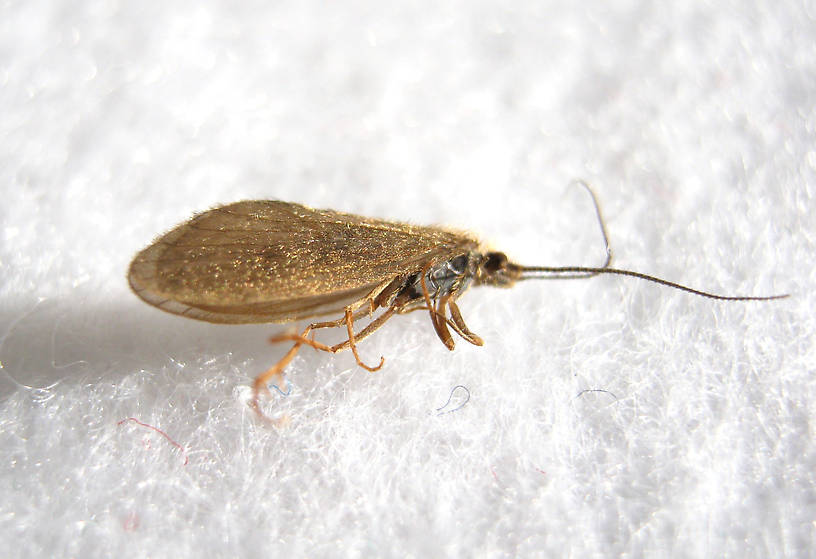
These specimens are still alive, just very cold, so the colors are accurate. I put them in the freezer for a bit to settle them down and overdid it a little:)
5 Larvae
Start a Discussion of Lepidostoma
References
- Baumann, Richard W. 1975. Revision of the Stonefly Family Nemouridae (plecoptera) : a Study Of The World Fauna At The Generic Level. Smithsonian Contributions to Zoology undef(211): 1-74.
- LaFontaine, Gary. 1981. Caddisflies. The Lyons Press.
- Swisher, Doug and Carl Richards. 2000. Selective Trout. The Lyons Press.
Caddisfly Genus Lepidostoma (Little Brown Sedges)
Taxonomy
Species in Lepidostoma
Lepidostoma bryanti
0
0
Lepidostoma cascadense
0
0
Lepidostoma cinereum
0
0
Lepidostoma costalis
0
0
Lepidostoma griseum
0
0
Lepidostoma pluvialeLittle Brown Sedges
0
0
Lepidostoma podagrumLittle Brown Sedges
4
9
Lepidostoma quercina
0
0
Lepidostoma rayneri
0
0
Lepidostoma roafi
0
0
Lepidostoma stigma
0
0
Lepidostoma togatum
0
0
Lepidostoma unicolor
0
0
Lepidostoma vernalis
0
0
Species in Lepidostoma: Lepidostoma bryanti, Lepidostoma cascadense, Lepidostoma cinereum, Lepidostoma costalis, Lepidostoma griseum, Lepidostoma pluviale, Lepidostoma podagrum, Lepidostoma quercina, Lepidostoma rayneri, Lepidostoma roafi, Lepidostoma stigma, Lepidostoma togatum, Lepidostoma unicolor, Lepidostoma vernalis
48 species (Lepidostoma acarol, Lepidostoma americana, Lepidostoma aporna, Lepidostoma astanea, Lepidostoma bakeri, Lepidostoma baxea, Lepidostoma cantha, Lepidostoma carolina, Lepidostoma carrolli, Lepidostoma compressa, Lepidostoma deceptiva, Lepidostoma delongi, Lepidostoma ermanea, Lepidostoma errigena, Lepidostoma etnieri, Lepidostoma excavatum, Lepidostoma flinti, Lepidostoma frosti, Lepidostoma glenni, Lepidostoma hoodi, Lepidostoma jewetti, Lepidostoma knulli, Lepidostoma latipennis, Lepidostoma lescheni, Lepidostoma liba, Lepidostoma licola, Lepidostoma lobatum, Lepidostoma lotor, Lepidostoma lydia, Lepidostoma mexicana, Lepidostoma mitchelli, Lepidostoma modesta, Lepidostoma morsei, Lepidostoma ontario, Lepidostoma ormae, Lepidostoma ozarkense, Lepidostoma pictilis, Lepidostoma prominens, Lepidostoma recina, Lepidostoma reosa, Lepidostoma sackeni, Lepidostoma serratum, Lepidostoma sommermanae, Lepidostoma spicata, Lepidostoma stylifer, Lepidostoma tibialis, Lepidostoma veroda, and Lepidostoma weaveri) aren't included.


